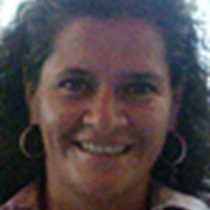Bartolomé Island
One of the smallest islands of the Galápagos archipelago, Bartolomé, is where we spent our first full day of the week’s expedition. This particularly small island is also very young. It is probably not more than two hundred thousand years old, which, geologically speaking is a newborn baby. As we hiked uphill we were able to see how a few species of vegetation known as ‘pioneers’ have been tasked with the big responsibility of making soil. This way, in a couple of thousand years when other species arrive they could have a chance to make it on the island. As we continued our climb, we talked about the different geological formations found here. The bare lava flows, traces of lava rivers, lava tunnels, sink holes and others formation have given the island the reputation of being a “geologist’s paradise”, for them it’s quite incredible to find these diverse geological features on such a small island.
To explore Bartolomé is to be transported back in time. Not many species have been able to survive in such a harsh ecosystem. The absence of fresh water makes life possible only to few hardy organisms. The smallest lava lizard of the archipelago is the lonely owner of this place. From time-to-time the lava lizard, who basically survives on vegetation and small insects, is visited by the Galápagos grasshopper, who can grow to be as big as the reptile. What is interesting to note here is that the small reptile is one of the most resistant creatures of the universe. Having adapted to these particularly harsh conditions, they have proven to be among the hardiest of all living organisms.
Later we saw how marine life lives in this site. We saw baby snappers, rainbow fish and cardinals while schools of white and black striped salemas captivated us with their movement. The golden beach had an amazing contrast of colors that made our afternoon even more remarkable.
In the afternoon, we visited Santiago Island, which is also known as James or San Salvador. This island has an interesting human history that’s represented in its many names given by the visitors who discovered the archipelago. Santiago was visited by Darwin himself back in 1835, and it was here where he did most of his field work.
As we returned to the ship in time for sunset, satisfied with what we learned and saw today, we were also happy in our knowledge that this place is being preserved for future generations.
Call +1.800.397.3348 or contact your travel advisor


